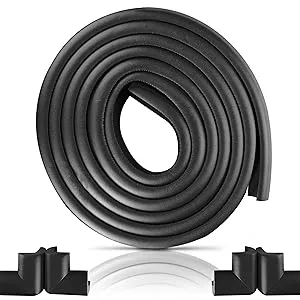Effective Interior Door Weather Stripping Solutions for Energy Efficiency and Comfort
Understanding Inside Door Weather Stripping Importance, Types, and Installation Tips
When it comes to maintaining a comfortable and energy-efficient home, one often overlooked component is inside door weather stripping. This simple yet effective solution helps keep your indoor environment cozy, reduces energy costs, and enhances the overall functionality of your doors. In this article, we will explore the significance of weather stripping, the different types available, and some essential tips for proper installation.
Why Weather Stripping Matters
Weather stripping plays a crucial role in ensuring that your home remains insulated from external elements. Without adequate weather stripping, air leaks can occur around doors, leading to drafts, temperature fluctuations, and increased utility bills. A well-sealed door can effectively confine heating and cooling systems, ensuring that they operate efficiently. Additionally, good weather stripping helps to keep out moisture, dust, and pests, promoting better indoor air quality and overall comfort.
Types of Weather Stripping
There are several types of weather stripping materials available, each suited for different purposes and door types. Understanding the options can help you choose the best solution for your home.
1. Foam Weather Stripping This is one of the most affordable options, featuring a self-adhesive backing for easy installation. Foam weather stripping is great for small gaps, but it may wear out quicker than other materials.
2. Vinyl Weather Stripping Durable and resistant to wear, vinyl weather stripping is ideal for exterior doors. Available in various sizes, it can be used on both the top and sides of doors.
3. Aluminum or Metal Weather Stripping This option is perfect for heavy traffic doors. Metal strips provide a sturdy barrier against drafts and can last significantly longer than other materials.
4. Rubber Weather Stripping Known for its flexibility and durability, rubber weather stripping fits snugly into door frames and seals gaps effectively. It's an excellent choice for areas that experience extreme weather conditions.
inside door weather stripping

5. Magnetic Weather Stripping Often used in storm doors or garage doors, magnetic weather stripping creates a tight seal when the door is closed. It’s remarkably effective in preventing drafts.
Installation Tips
The installation of weather stripping is a straightforward DIY project that can yield immediate benefits. Here are some tips to ensure effective installation
1. Clean the Surface Before applying weather stripping, ensure that the door frame is clean and dry. Remove any old weather stripping or debris that may interfere with the adhesion.
2. Choose the Right Type Consider the width of the gaps you need to seal. For larger spaces, opt for thicker materials like foam or rubber. For smaller gaps, thinner strips may suffice.
3. Measure Accurately Measure the length of the sides and top of the door frame. Make sure you cut the weather stripping to the appropriate size to create a tight seal.
4. Apply with Care If you're using adhesive-backed weather stripping, peel off the backing and press it firmly against the door frame. For nail-on or screw-on types, carefully align them before fastening.
5. Test for Effectiveness Once installed, check for any drafts by closing the door and feeling for air leaks. If necessary, adjust the weather stripping for a better fit.
Conclusion
Inside door weather stripping is a simple yet effective way to enhance your home’s energy efficiency and comfort. By selecting the right type of weather stripping and installing it properly, homeowners can reduce energy costs, improve insulation, and maintain a pleasant indoor climate. Regularly inspecting and replacing worn weather stripping can ensure that your home remains well-protected against the elements for years to come. So, don't overlook this small but mighty component in your quest for a more comfortable and efficient home!
-
Under Door Draught Stopper: Essential ProtectionNewsJul.31,2025
-
Garage Door Seal and Weatherstrips for ProtectionNewsJul.31,2025
-
Edge Banding Tape for Perfect EdgesNewsJul.31,2025
-
Table Corner Guards and Wall Corner ProtectorsNewsJul.31,2025
-
Stair Nose Edging Trim and Tile Stair SolutionsNewsJul.31,2025
-
Truck Bed Rubber Mats for Pickup BedsNewsJul.31,2025
-
Window Weather Stripping for Noise ReductionNewsJul.29,2025